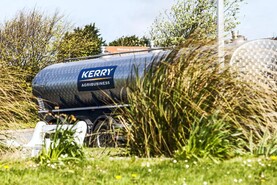Since the end of headage payments in the mid-2000s there has been an ongoing debate about the economics of suckler beef production.
While numbers have steadied in recent years around the 260,000 mark, the difficult spring of 2018 left many producers questioning their future in the industry.
Increasing numbers of farmers are cutting suckler numbers and opting to rear beef crosses from the dairy herd.
With some beef processors actively encouraging more farmers to rear dairy bred calves, we collectively seem to have lost sight of the fact that around half our beef still comes from sucklers.
It is also a sector less under pressure from environmental rules, a sector that is important to maintaining biodiversity on marginal land, and a sector that is key to the marketing effort for NI beef production into the future.
Rewarding beef
Whether any direct payment support is put towards sucklers in the future is open for debate, but a starting point would be to properly reward beef from the suckler herd. Our analysis suggests that there should be at least an 18p/kg difference between an O3 and R3, with a similar gap between a R3 and U3. Yet the latest price report from NI shows that less than 10p/kg covered all three grades. It is the lowest difference across the grades anywhere on these islands, and possibly anywhere in Europe. Quite simply, if we want to retain sucklers we must pay farmers on the basis of meat yield, or with a system that properly reflects the yield of meat on a carcase.
We have set out two possible new price grids, using a R3 grade as the base. They are only there to stimulate debate, and ultimately it would be for farming organisations and processors to agree a new system. There might also be an opportunity to simplify the grid, by grouping some of the grades.






 This is a subscriber-only article
This is a subscriber-only article










SHARING OPTIONS: